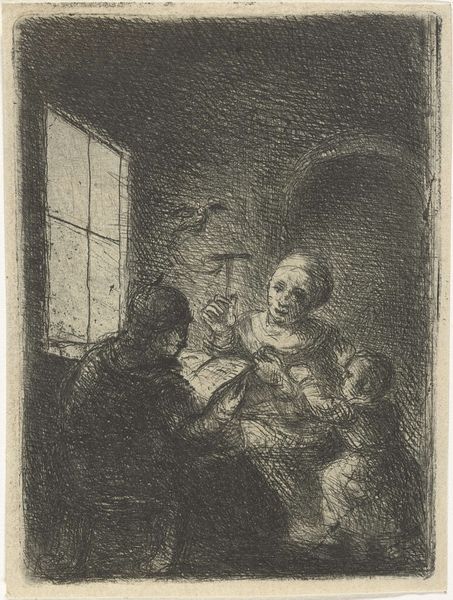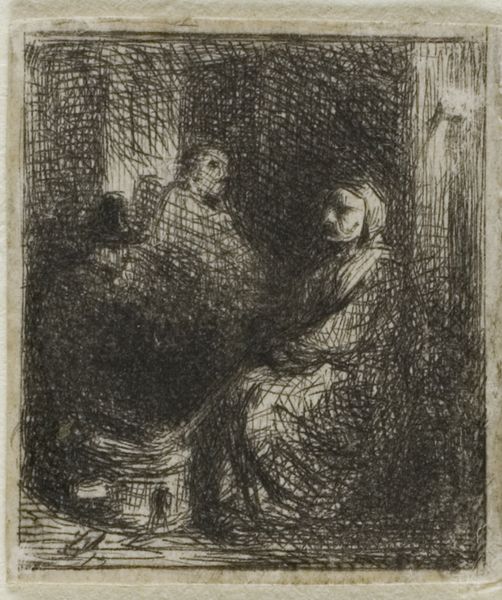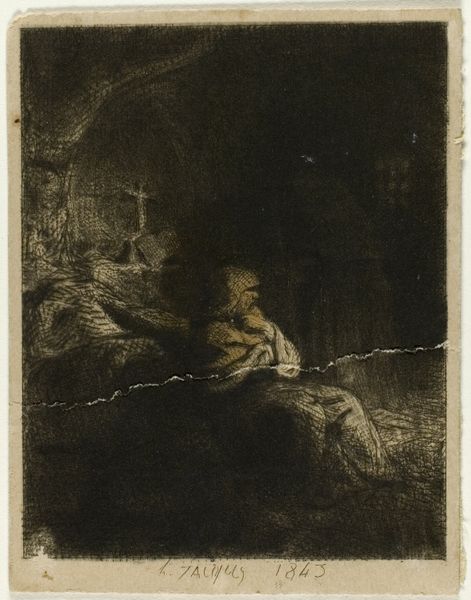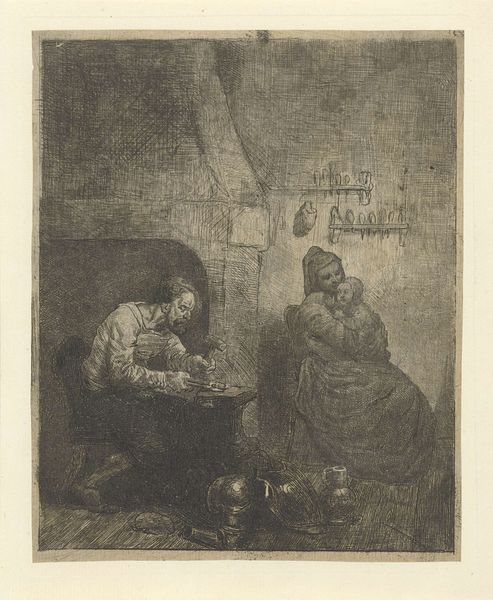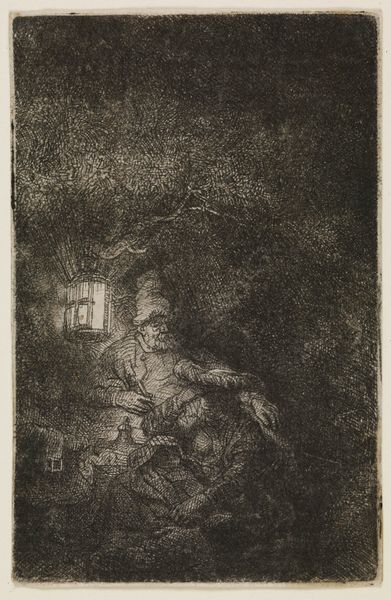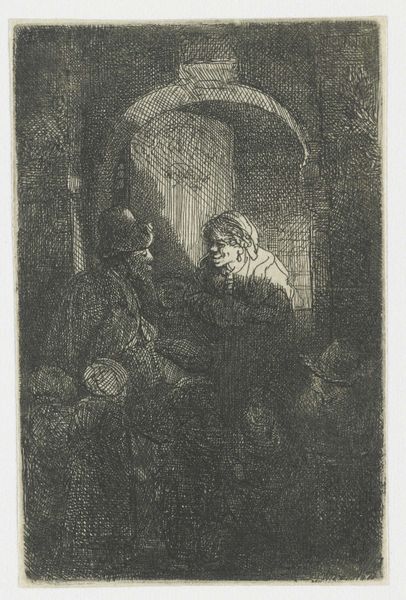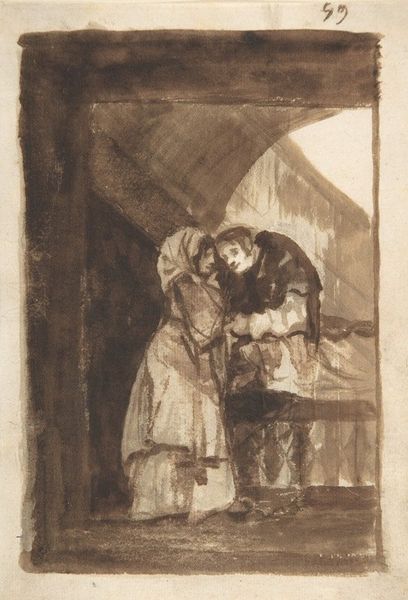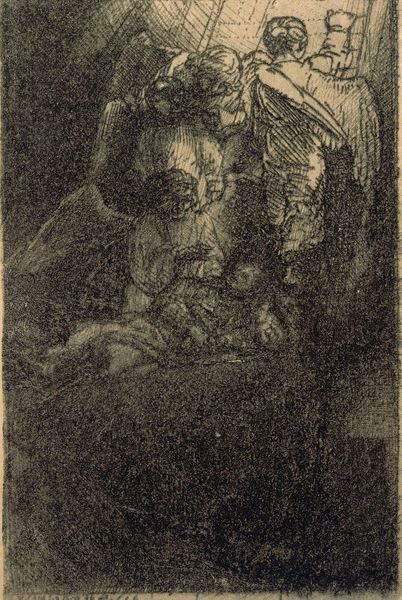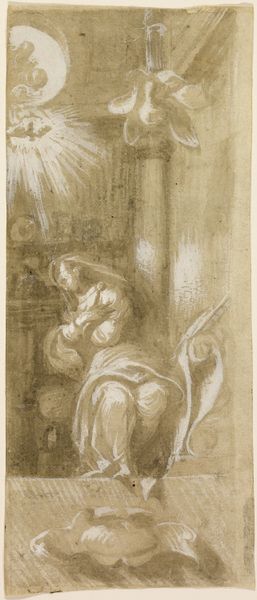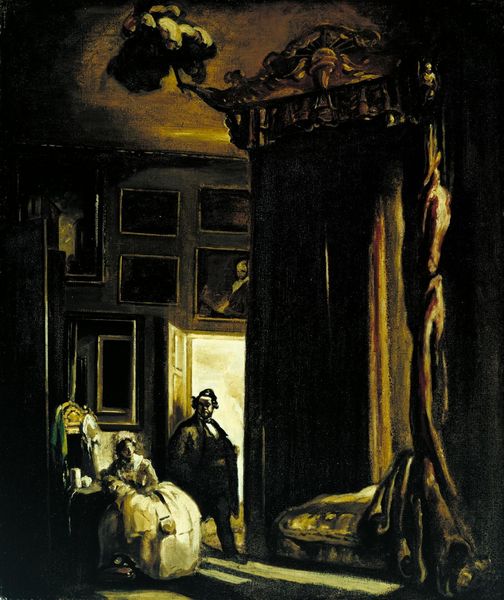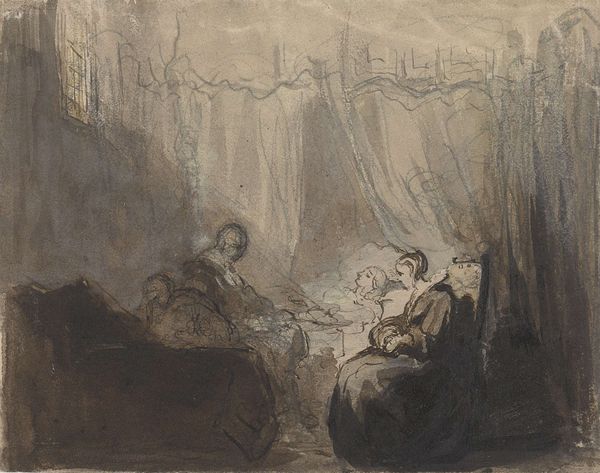
drawing, ink, pencil, charcoal
#
portrait
#
drawing
#
narrative-art
#
baroque
#
charcoal drawing
#
figuration
#
11_renaissance
#
oil painting
#
ink
#
pencil
#
genre-painting
#
charcoal
Dimensions: 10.3 x 13.9 cm
Copyright: Public domain
Curator: Adam Elsheimer’s small drawing titled "Mocking of Ceres," from around 1605, invites us to witness a poignant narrative rendered in ink, pencil, and charcoal. Editor: Well, my first thought is: it's claustrophobic! A sort of fever dream in earthy tones and smoky greys, like watching a play staged in a cramped attic. I’m instantly curious. Curator: Indeed, the composition, packed into a relatively small space, heightens the emotional intensity. Formally, the artist employs chiaroscuro masterfully. Notice the light focused on the central figure drinking, almost drowning themselves, while the other figures lurk in shadow, heightening the drama. Editor: It does feel as if we are peering into a secret moment, right? Ceres, the goddess of agriculture and fertility, clearly isn’t being honored here; this feels more like she’s being… tormented. Or, more realistically, seeking refuge from torment herself, poor woman! The faces, half-lit, tell a grim story. Curator: The narrative pulls from Ovid’s *Metamorphoses*, actually. Ceres is mocked in her grief for Persephone, with an old woman greedily gulping down water. Elsheimer uses the formal devices available to him, like line weight and tonal gradations, to build this scene out from the mythology into something rawly human. He even plays with visual counterpoint; observe the wooden doorway contrasting the implied vastness beyond the fenced, darkened yard, suggestive of psychological entrapment, would you agree? Editor: Oh, definitely trapped! Even the lines seem to claw at the air, and that stifling darkness almost threatens to spill out. The human forms emerge—or dissolve—into it, all held together in the stark embrace of poverty and what I imagine is desperate escape. It almost reminds me of a stage setting by someone like Brecht, stripped to the core, where every object and person feels laden with symbolism. Curator: Elsheimer's talent lies precisely there, translating complex allegories into such striking emotional registers through sheer skill of representation. His control of ink, pencil, charcoal—combined with an insightful understanding of narrative composition—makes the viewer complicit in bearing witness. Editor: Bearing witness—precisely. After really sitting with it for a few moments, the artwork manages to make grand mythology intimately felt and intensely real. A haunting reminder of stories outside ourselves.
Comments
No comments
Be the first to comment and join the conversation on the ultimate creative platform.
